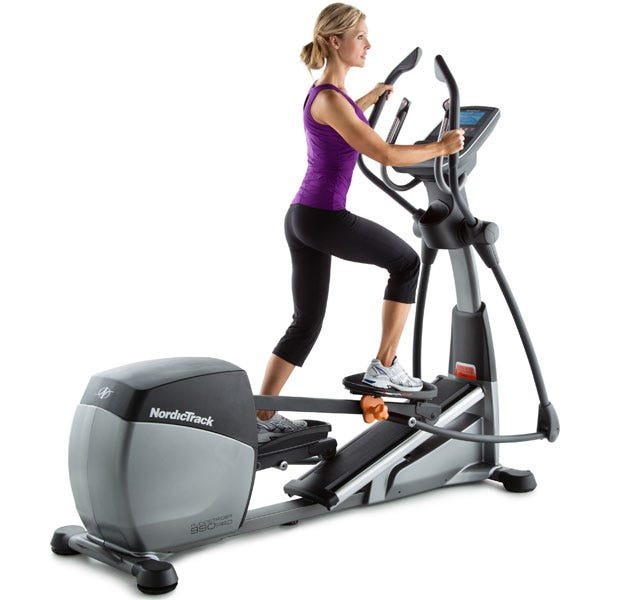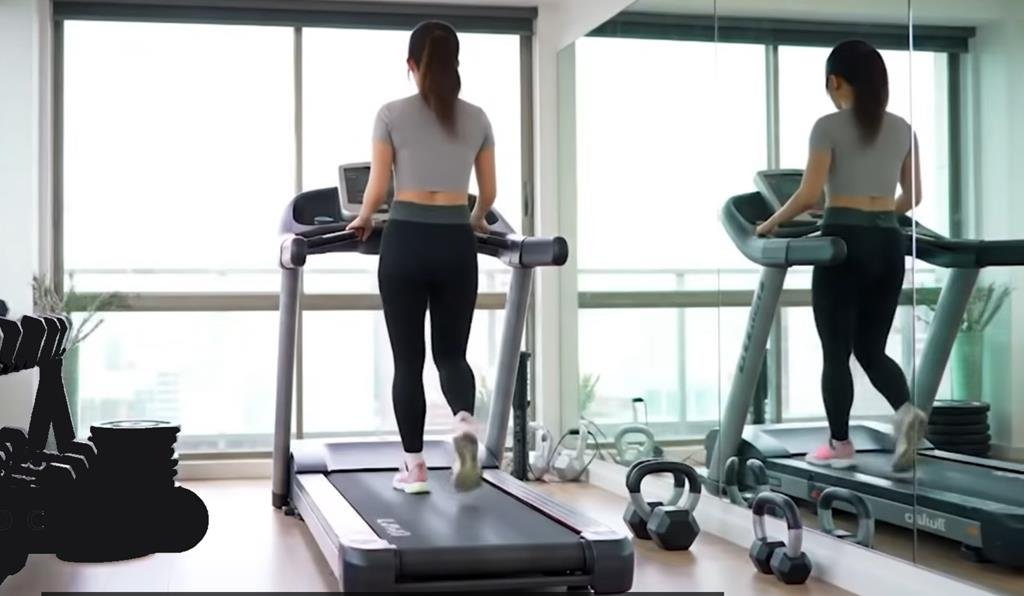Are you standing at the crossroads of your fitness journey, wondering whether to choose an elliptical or a cross trainer? You’re not alone.
Many fitness enthusiasts and beginners alike find themselves puzzled by these two popular workout machines. While they might look similar at first glance, they each offer unique benefits that could significantly impact your exercise routine and goals. Understanding the differences can help you make the right choice for your personal fitness needs.
Imagine finding the perfect machine that aligns with your lifestyle and propels you toward your fitness goals faster and more efficiently. Intrigued? Let’s dive deeper and unravel what sets an elliptical apart from a cross trainer. Your perfect workout companion awaits!
Elliptical Basics
Elliptical machines and cross trainers are popular for indoor workouts. Both help improve fitness and burn calories. Understanding their differences starts with knowing elliptical basics.
This guide explains design and motion, targeted muscle groups, and common features of elliptical machines.
Design And Motion
Elliptical machines have a smooth, oval-shaped motion. This motion reduces joint impact. The pedals move in an elliptical path that mimics natural walking or running.
Cross trainers use a similar motion but often include more moving parts. They might have adjustable stride lengths and arm handles that move back and forth.
Targeted Muscle Groups
- Quadriceps and hamstrings in the legs
- Glute muscles in the hips
- Calves for lower leg strength
- Arms and shoulders if handles are used
- Core muscles for balance and stability
Both ellipticals and cross trainers work these muscles, but the exact focus can vary by machine design.
Common Features
| Feature | Elliptical | Cross Trainer |
|---|---|---|
| Stride Length | Fixed or limited adjustment | Often adjustable |
| Handlebars | Fixed or moving | Usually moving for full-body workout |
| Impact on Joints | Low impact | Low to moderate impact |
| Resistance Types | Magnetic or mechanical | Magnetic, mechanical, or air |
| Workout Programs | Basic to advanced | Basic to advanced |

Cross Trainer Features
Cross trainers are popular exercise machines. They offer a low-impact workout. This helps protect your joints.
Understanding their features helps you choose the right machine. Let’s look at key aspects of cross trainers.
Movement Mechanics
Cross trainers use smooth, circular motions. Both the arms and legs move together. This mimics natural walking or running.
- Pedals move in an elliptical path
- Handles move back and forth for arm exercise
- Allows forward and backward pedaling
- Low impact on knees and hips
Muscle Engagement
Cross trainers work many muscles at once. They focus on both upper and lower body muscles.
| Muscle Group | Engagement Level |
| Quadriceps (front thighs) | High |
| Hamstrings (back thighs) | High |
| Glutes (buttocks) | Moderate |
| Calves | Moderate |
| Arms (biceps and triceps) | Moderate to High |
| Core muscles | Moderate |
Unique Benefits
Cross trainers offer several special advantages. These benefits support fitness and health goals.
- Improves cardiovascular health
- Builds endurance and strength
- Reduces stress on joints
- Supports full-body workout
- Offers adjustable resistance levels
- Allows backward and forward motion
Comparing Workouts
Elliptical machines and cross trainers are popular for cardio workouts. Both help improve fitness but have differences.
Understanding these differences helps you choose the right equipment for your exercise goals.
Intensity And Impact
Elliptical workouts are low-impact and gentle on the joints. Cross trainers offer a bit more resistance and can be more intense.
- Ellipticals provide smooth, gliding motion to reduce stress on knees and hips.
- Cross trainers combine arm and leg movements for a full-body workout.
- Cross trainers allow adjustable resistance levels for varied intensity.
Calorie Burn
Calorie burn depends on workout intensity and duration. Both machines help burn calories efficiently.
| Machine | Calories Burned (30 min) | Workout Focus |
|---|---|---|
| Elliptical | 250-350 | Lower body and cardio |
| Cross Trainer | 300-400 | Full body with arms and legs |
Suitability For Fitness Levels
Both machines fit different fitness levels but vary in ease and control.
- Ellipticals are easy for beginners and those with joint pain.
- Cross trainers suit moderate to advanced users seeking full-body workouts.
- Resistance and speed settings on both can be adjusted to match fitness level.

User Experience
Choosing between an elliptical and a cross trainer depends on how comfortable and easy they are to use. Both machines offer a good workout. Still, their design affects your experience.
This guide compares the user experience of ellipticals and cross trainers. It covers comfort, noise, space, and maintenance to help you decide.
Comfort And Ergonomics
Ellipticals have a smooth, oval motion that is gentle on the joints. Cross trainers combine arm and leg movements for a full-body workout. The handlebar design differs between the two, affecting grip comfort.
- Ellipticals often have larger pedals for foot comfort.
- Cross trainers usually offer adjustable stride lengths.
- Both have padded handles, but cross trainers may have more arm support.
- Ellipticals tend to feel easier for longer sessions.
Noise And Space Requirements
Noise level and size matter, especially if you exercise at home. Ellipticals usually run quietly because of their smooth movement. Cross trainers can produce more noise due to complex mechanisms.
| Feature | Elliptical | Cross Trainer |
|---|---|---|
| Noise Level | Low, smooth operation | Moderate, some clicking |
| Footprint | Compact and slim | Larger, needs more room |
| Height | Lower profile | Taller due to arm movement |
Maintenance Needs
Both machines need regular checks to keep working well. Ellipticals have fewer moving parts, so they need less care. Cross trainers have more joints and cables, requiring extra attention.
- Wipe down surfaces after use to prevent sweat damage.
- Lubricate moving parts every 3-6 months.
- Tighten bolts and screws regularly.
- Check cables and pedals for wear on cross trainers.
Choosing The Right Equipment
Choosing between an elliptical and a cross trainer can be hard. Both machines help improve fitness but work differently.
Understanding your needs helps pick the best machine for you.
Fitness Goals Alignment
Ellipticals focus on low-impact cardio. They are gentle on joints and good for steady workouts.
Cross trainers add upper body movement. They give a full-body workout and burn more calories.
- Elliptical: Best for joint-friendly cardio
- Cross Trainer: Best for full-body exercise
- Choose based on whether you want light or intense workouts
Budget Considerations
Ellipticals usually cost less than cross trainers. They have simpler designs.
Cross trainers often have more features. This can raise the price but offer more workout options.
- Elliptical: Lower price, fewer features
- Cross Trainer: Higher price, more features
- Set a budget before choosing your machine
Home Vs Gym Use
Ellipticals are usually smaller. They fit well in most homes.
Cross trainers need more space. They are common in gyms and bigger home gyms.
- Elliptical: Compact, good for small spaces
- Cross Trainer: Larger, needs more room
- Think about your available space before buying

Frequently Asked Questions
What Is An Elliptical Machine Used For?
An elliptical machine provides low-impact cardio by simulating walking, running, and stair climbing. It improves cardiovascular fitness and tones muscles.
How Does A Cross Trainer Differ From An Elliptical?
A cross trainer offers more varied motion with adjustable resistance. It targets upper and lower body muscles more intensely than an elliptical.
Which Machine Burns More Calories, Elliptical Or Cross Trainer?
Generally, cross trainers burn slightly more calories due to increased resistance and full-body engagement during workouts.
Are Ellipticals Or Cross Trainers Better For Joint Health?
Ellipticals are gentler on joints thanks to smooth, low-impact movements, making them ideal for those with joint concerns.
Conclusion
Ellipticals and cross trainers both offer great workouts. Ellipticals focus more on smooth, low-impact motion. Cross trainers include arm movements for a full-body exercise. Choosing depends on your fitness goals and comfort. Both help improve heart health and burn calories.
Try each to see which suits you best. Regular use will build strength and endurance. Simple, consistent workouts bring the best results. Keep moving, stay active, and enjoy fitness progress.



